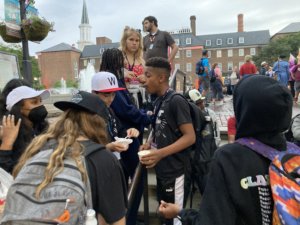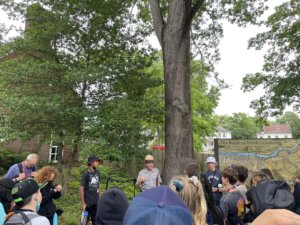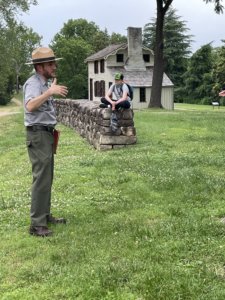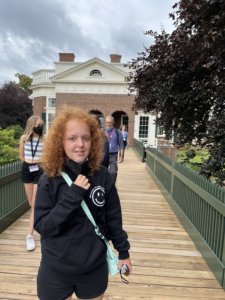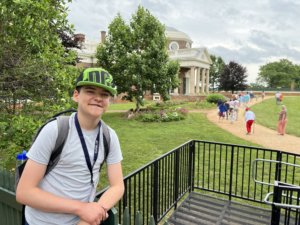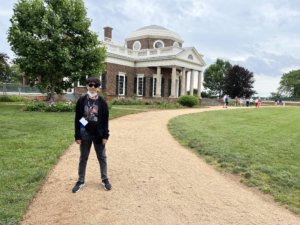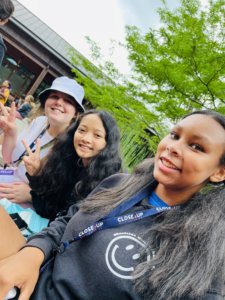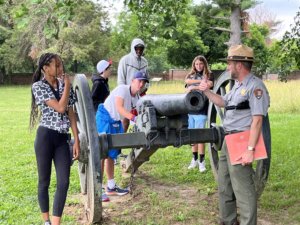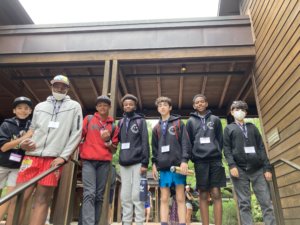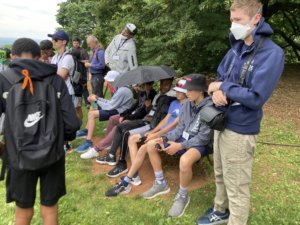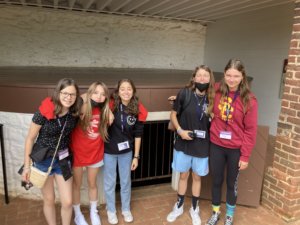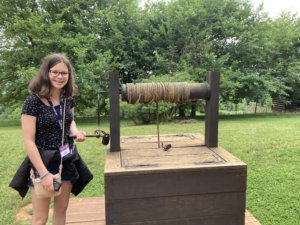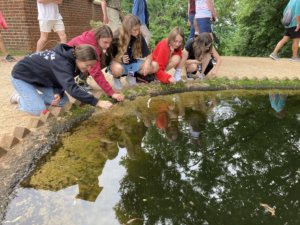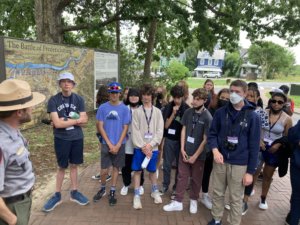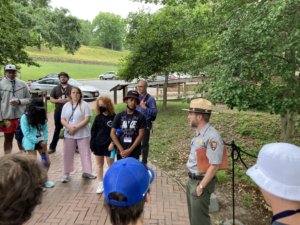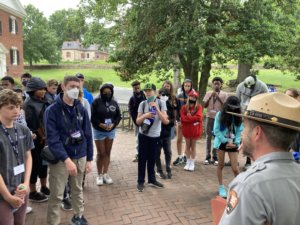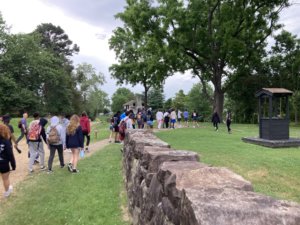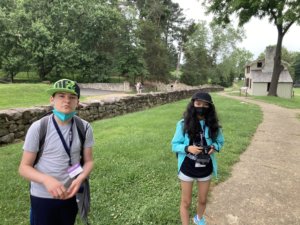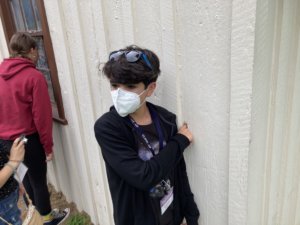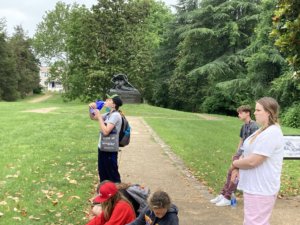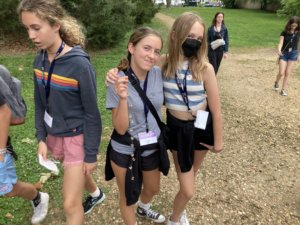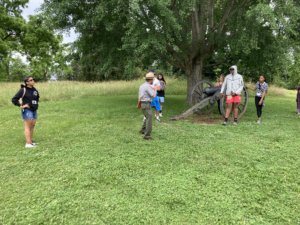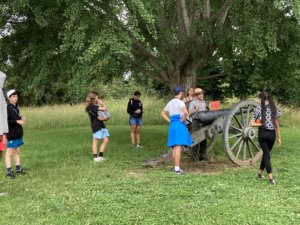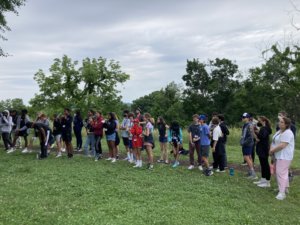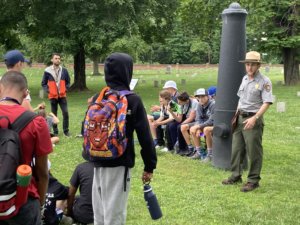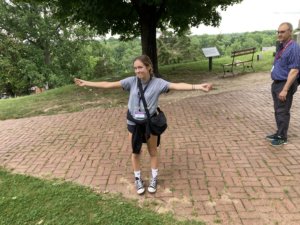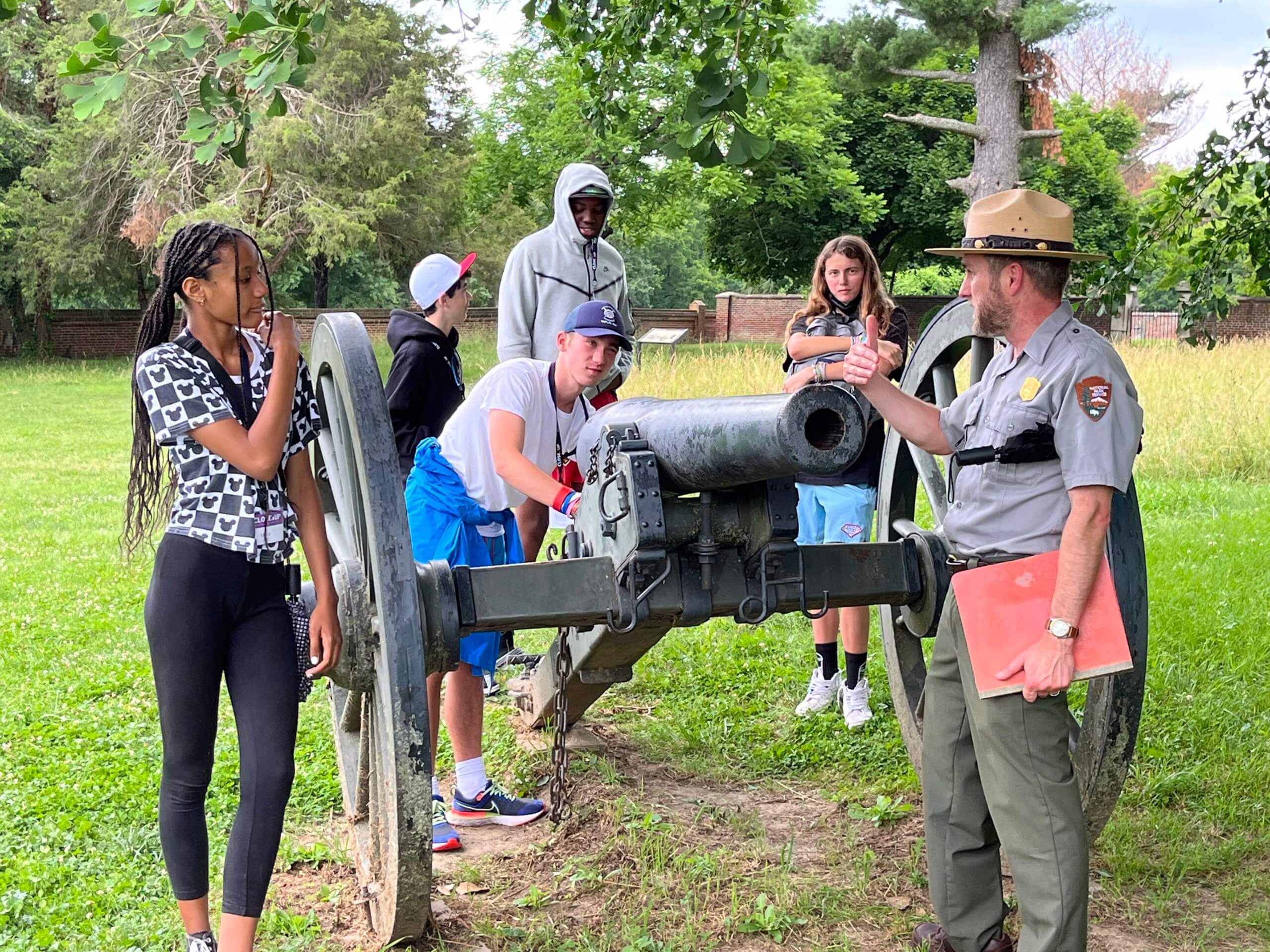
Washington D.C. 2022
Day 3
After yesterday’s non-stop DC tour, and most likely coupled with staying up well past lights out, a handful of kids’ rooms were absolutely unprepared for their wake-up knocks. It took a while to get the whole crew down to breakfast, but at least that would mean the three-hour bus ride to Monticello would be quiet and full of kids catching up on their sleep.
Nope!
They talked. They played cards. They commented on the verdant countryside. They played road trip games.
“I spy with my little eye something crazy.”
“Henry’s hat.”
“Mr Brannan.”
“The bus seat fabric pattern.”
“No — $4 gas prices!”
For his part, with his little eye, somewhere near the turnoff to Manassas, Mr Brannan spotted an open entry cornhole tournament at the local Legion Hall and considered briefly scrapping the day’s itinerary to put his skills to the test. Ultimately, he decided Virginia wasn’t ready to witness his transcendent talent, so he let the bus roll on.
The arrival at Monticello was eventful. After a 2 ½-hour bus ride, students stretched their legs and opened their eyes to the lush forests and surrounding green of the Monticello property.
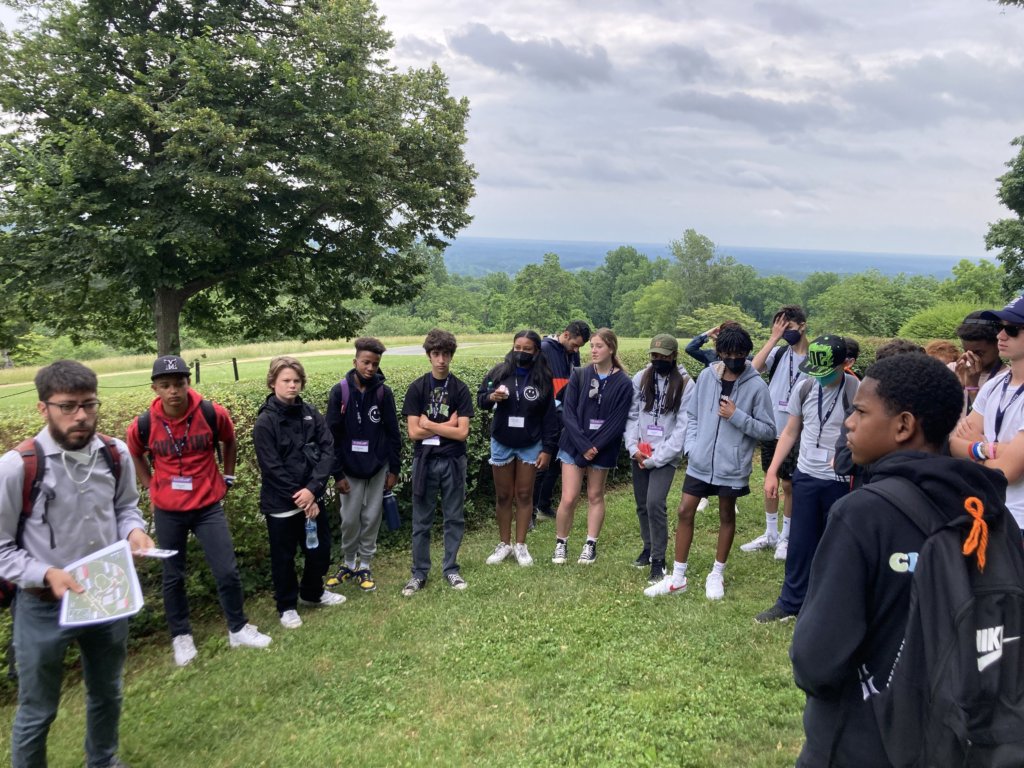
Monticello, little mountain in Italian, was an estate built by Thomas Jefferson. The construction of the home commenced in 1770 and saw its completion in 1809. The area served as a plantation. In his lifetime, Jefferson enslaved over 600 individuals, only freeing 7 in his lifetime, a large portion of whom resided on the plantation. Monticello remains remarkably well preserved, and the informational placards and docents on site pull no punches when it comes to Mr Jefferson’s actions.
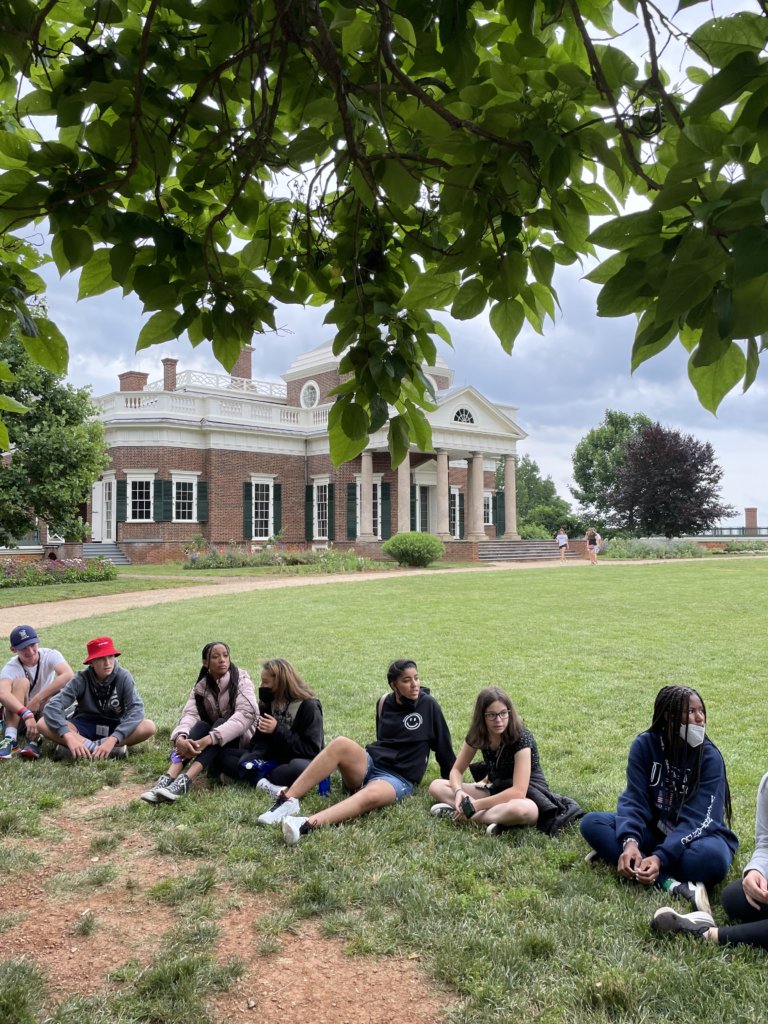
The house itself is filled with artifacts, trinquets, and objects from various places and spaces. His collection contained objects from the Greco-Roman period to Native American artifacts, as well as fossilized remains. Some visitors to his home would refer to his home as a “rich museum,” while others called it, “cluttered.” One of the pressing questions that the kids kept asking was, “Who would Jefferson be in this day and age? How would he be perceived?”
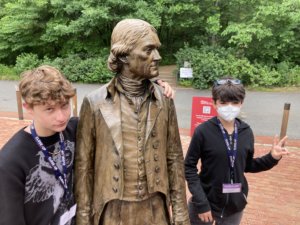
Some other bits of interesting information from Monticello:
- TJ designed a mechanical clock in his guest foyer. But, his calculations were off, so he had a hole cut in the floor so the weights had the room necessary to work.
- He had 6500 books in his library, which he donated to The Library of Congress after the war 1812 when the White House was burned to the ground. after 1812.
- Instead of a chapel or church, TJ put a library at center of campus UVA
- The Hemings children were freed in adulthood because Sally made a deal with Jefferson upon agreeing to return to USA from France
- He was a staunch believer in freedom of religion, and it didn’t matter to him whether his neighbor believed in no god or twenty gods.
- “The earth belongs to the living” Jefferson quote
- After TJ’s death, Uriah Levy bought the house in the 1830s. Levy was Jewish, and he was so appreciative of Jefferson’s belief in freedom of religion that he tried to maintain the home in its original form. It is due to Levy and his family’s ownership of the home for 90 years that people are able to view it today with so much of its original design.
From Monticello, we headed northeast on the bus to Fredericksburg. Ranger Pete met us at the entrance to the National Park and became an instant sensation with the kids. He was knowledgeable, kind, and energetic. He told the kids all about the battle that happened 160 years ago where they were standing.
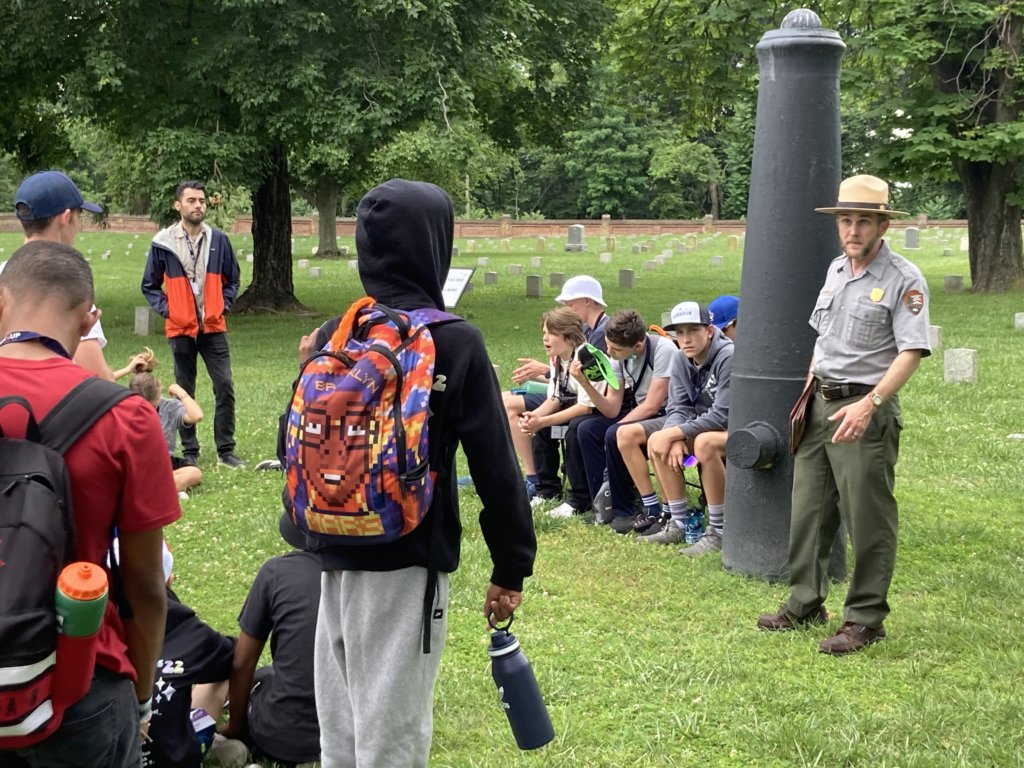
From Ranger Pete, they learned that the Battle of Fredericksburg was an unmitigated disaster for the Union. The Union possessed superior numbers, and they initially had the element of surprise. But they lost their chance to strike quickly, made mistake after mistake, and ultimately suffered more than double the casualties they inflicted on the Confederates.
The aftermath of the battle saw yet another crisis within Lincoln’s cabinet of rivals (which he ably redressed) and forced another change in leadership at the top of the Union Army. Less than a month after the battle, the Emancipation Proclamation went into effect, and African American soldiers were finally allowed to fight for the Union in the Civil War. By February, the first entirely Black regiment fought in its first battle. The Union would win the war two years later.
While we were walking around the national park, faint drops of water began falling from the sky. It wasn’t really raining. It wasn’t really sprinkling.
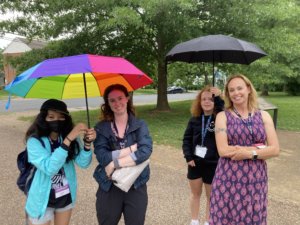
It was quite humid, though . . . and Daniel quickly opened his umbrella to protect himself, drawing multiple comments from the chaperones asking if he was the Wicked Witch of the West.
After another bus trip, the students were itching for their first opportunity to boost the economy in Old Town Alexandria. Armed with cash in their pockets and friends by their side, they made their way to such fine establishments as Chipotle, CVS, and ice cream. The riveting conversation on the bus ride back to the hotel regarding the pronunciation of Hyatt (hi-it, hi-yat, hiat) is all the proof we need that maybe more sugar than substance was consumed.
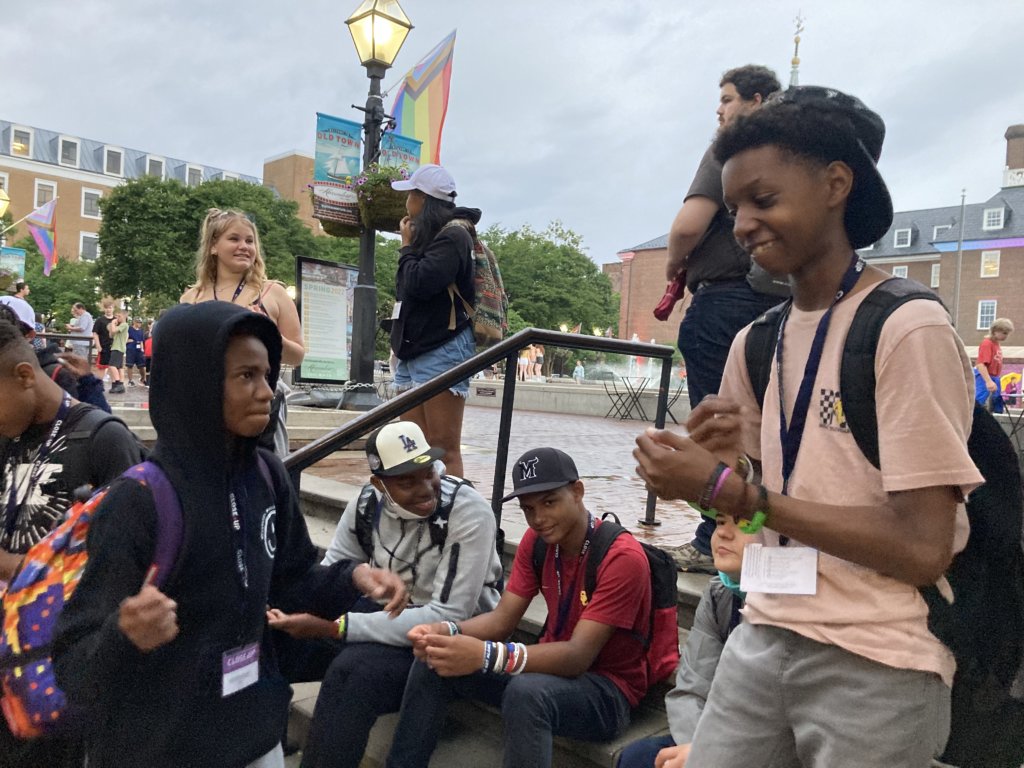
All in all, it was a wonderful day, and students (like their chaperones) are finally feeling the effects of these jam-packed days—in a good way.
Tomorrow, we are off to the Eisenhower Memorial, National Museum of African American History and Culture, the White House, and a Cubs game…I mean an Orioles game (it’s only Ms. Platt who calls it the Cubs game).
